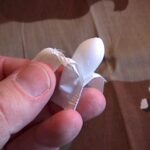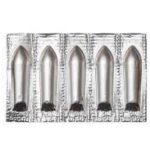Can I Pee After Inserting Terconazole vaginal Cream or Suppository?

Terconazole is an antifungal drug used to treat vaginal yeast infection. It comes as a lotion or a suppository and disrupts the biosynthesis of fats in a yeast cell. It has a relatively broad spectrum compared to azole compounds but not triazole compounds.
A vaginal yeast infection, also known as candidiasis, is a common condition. A healthy vagina contains bacteria and some yeast cells. But when the balance of bacteria and yeast changes, the yeast cells can multiply. This causes itching, swelling, and irritation.
Treating a vaginal yeast infection can relieve symptoms within a few days. In more severe cases, it may take longer. Vaginal yeast infections aren’t considered a sexually transmitted infection (STI), commonly known as sexually transmitted disease (STD). Sexual contact can spread it, but women who aren’t sexually active can also get them.
Terconazole vaginal cream and suppositories are available only with your doctor’s prescription.
This product is available in the following dosage forms:
• Cream
• Suppository
How should this medicine be used?
Terconazole comes as a cream and suppository to insert into the vagina. It is usually used daily at bedtime for either 3 or 7 days. Follow the directions on your prescription label carefully, and ask your doctor or pharmacist to explain any part you do not understand. Use terconazole exactly as directed. Do not use more or less of it or use it more often than prescribed by your doctor.
To use the vaginal cream or vaginal suppositories, read the instructions provided with the medication and follow these steps:
1. To use the cream, fill the special applicator that comes with the cream to the level indicated. To use the suppository, unwrap it, wet it with lukewarm water, and place it on the applicator as shown in the accompanying instructions.
2. Lie on your back with your knees drawn upward and spread apart.
3. Insert the applicator high into your vagina (unless you are pregnant), and then push the plunger to release the medication. If you are pregnant, insert the applicator gently. If you feel resistance (hard to insert), do not try to insert it further; call your doctor.
4. Withdraw the applicator.
5. Pull the applicator apart and clean it with soap and warm water after each use.
6. Wash your hands promptly to avoid spreading the infection.
The dose should be applied when you lie down to go to bed. The drug works best if you do not get up again after applying it except to wash your hands. You may wish to wear a sanitary napkin to protect your clothing against stains. Do not use a tampon because it will absorb the drug. Do not douche unless your doctor tells you to do so.
Continue to use terconazole even if you feel well. Do not stop using terconazole without talking to your doctor. Continue using this medication during your menstrual period.
Can I pee after inserting terconazole?
Yes, terconazole vaginal cream and suppositories do not prevent you from peeing. However, avoid peeing immediately after insertion. Although the urethra is outside or in front of the vagina, some of the urine may go inside the vagina. This can dissolve the drug too fast and make it too watery.
Maximum plasma concentrations of terconazole occur 5 to 10 hours after intravaginal application of the cream or suppository. Systemic exposure to terconazole is approximately proportional to the applied dose, whether as the cream or suppository. It is recommended that you should stay off peeing for at least one hour after applying terconazole.
Doctors recommend emptying your bladder regularly, about once every three hours. While delaying nature’s call for an hour or two won’t pose any threat to your health, it’s possible to harm your body by holding pee for too long, or by making a habit of not relieving yourself often enough.
A healthy bladder can hold about 2 cups of urine before it’s considered full. It takes your body 9 to 10 hours to produce 2 cups of urine. That’s about as long as you can wait and still be in the safe zone without the possibility of damaging your organs.
In the worst of circumstances, your bladder may stretch to hold even more than 2 cups of fluid. But if for some reason you’re not physically able to pee, or if you notice that your child is not peeing, you’re right to be concerned.
To avoid a situation like holding your urine just because of an insert, always pee before using the drug. This will prevent the urge from coming shortly after inserting the medication.
Terconazole vaginal side effects
Get emergency medical help if you have signs of an allergic reaction: hives; difficult breathing; swelling of your face, lips, tongue, or throat.
Terconazole vaginal may cause serious side effects. Call your doctor at once if you have:
• new or worsening symptoms;
• fever, chills, flu symptoms;
• severe vaginal irritation; or
• severe skin reaction–fever, sore throat, swelling in your face or tongue, burning in your eyes, skin pain, followed by a red or purple skin rash that spreads (especially in the face or upper body) and causes blistering and peeling.
Common side effects of terconazole vaginal may include:
• headache;
• body pain;
• vaginal pain, burning, or itching;
• stomach pain; or
• increased menstrual cramps.
This is not a complete list of side effects and others may occur. Avoid combining this medication with home remedies for yeast infection. Call your doctor for medical advice about side effects. You may report side effects to FDA at 1-800-FDA-1088.





